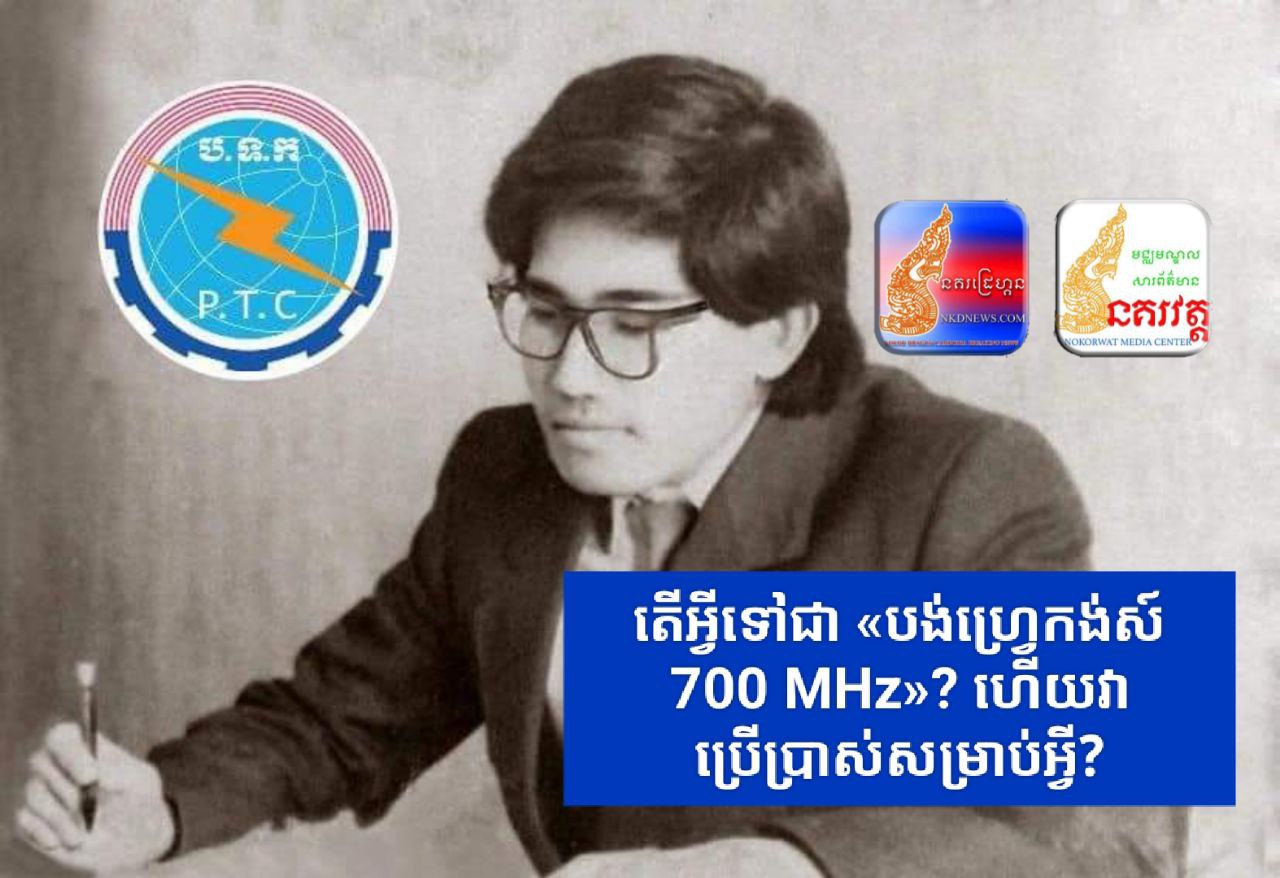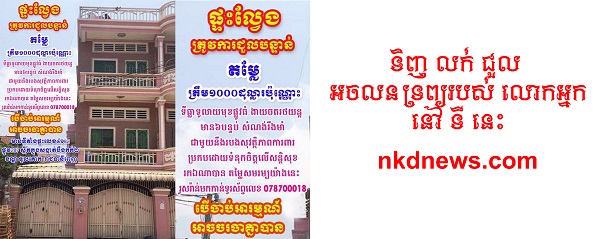ភ្នំពេញ : តើអ្វីទៅជា «បង់ហ្វ្រេកង់ស៍ 700 MHz»? ហើយវាប្រើប្រាស់សម្រាប់អ្វី? នេះជាការលើកឡើងដោយ លោក អុឹម វុត្ថា ទីប្រឹក្សាក្រសួងប្រៃសណីយ៍និងទូរគមនាគមន៍ នៅល្ងាចថ្ងៃទី១ ខែវិច្ឆិកា ឆ្នាំ២០២២។ លោកលើកឡើងថា, បង់ហ្វ្រេកង់ស៍ 700 MHz គឺជាបន្ទាហ្វ្រេកង់ស៍វិទ្យុចន្លោះពី 694 MHz ដល់ 790 MHz។
វាជាផ្នែកមួយនៃបង់ហ្វ្រេកង់ស៍អ៊ូត្រាខ្ពស់ ហៅថា UHF ដឺលបច្ចុប្បន្ននេះត្រូវបានប្រើទូទាំងសហភាពអ៖ឺរ៉ុប សម្រាប់វិស័យសោតទស្សន៍លើដី។
បង់ UHF រួមមានបន្ទាហ្វ្រេកង់ស៍ចន្លោះពី 470 MHz ដល់ 790 MHz និងត្រូវបានប្រើប្រាស់សម្រាប់ការផ្សាយកាណាល់ទូរទស្សន៍ឌីជីថលលើដី ហៅថា DTT និងសម្រាប់ម៉ៃក្រូហ្វួនឥតខ្សែ នៅក្នុងរដ្ឋសមាជិកនៃសហភាពអ៉ឺរ៉ុប។
ជាប្រពៃណី បង់ហ្វ្រេកង់ស៍នេះ ត្រីវបានកំណត់ផ្តាច់មុខដើម្បីបម្រើឲ្យការផ្សាយ នៅក្នុងសហភាពអ៉ឺរ៉ុប និងអាហ្វ្រិក ដូចគ្នាផងដែរ នៅក្នុងទូទាំងពិភពលោក។
កាណាល់ទូរទស្សន៍ ដែលបានផ្តល់ជូនទៅប្រជាពលរដ្ឋ តាមរយ:បង់ហ្វ្រេកង់ស៍ UHF ស្ថិតនៅក្នុងស្តង់ដារ SD និងស្ថិតនៅក្នុងស្តង់ដារ HD និងត្រូវបានចាប់នៅលើអេក្រង់ទូរទស្សន៍/ទូរទស្សន៍ នៅក្នុងផ្ទះ តាមរយៈអង់តែនលើដំបូលផ្ទះ។
At the moment, the UHF band is used as a whole for DTT transmission. In the future, according to today’s proposal, it will be “divided” in two parts:
The upper part 694-790 MHz (700 MHz band) will be used for wireless broadband services;
The lower part 470-694 MHz (sub-700 MHz band) will be available in the first place for the distribution of audiovisual services (such as DTT), as well as for wireless audio equipment for programme making and special events (abbreviated as PMSE; this includes wireless microphones for stage performance and content production in a number of locations such as theatres or open air venues). Member States will also have the flexibility to use alternative technologies in the sub-700 MHz band limited to downlink-only transmission (i.e. from the network to receiving terminals such as TV sets or tablets) in order to ensure efficient spectrum use.
How can this help consumers?
Due to its technical qualities (wide territorial reach, good penetration of buildings and other obstacles), the 700 MHz band will help meet the increasing consumer demand for audiovisual content and other broadband services over wireless networks. Wireless traffic is estimated to increase nearly 8 times by 2020. With more spectrum for mobile broadband, inhabitants of rural areas will benefit from a wider broadband coverage, both at home and on the move. This will help bridge the digital divide in Europe and create a Digital Single Market. At the same time, citizens in urban areas will enjoy better indoor and outdoor coverage with a reliable and faster internet connection.
Which mobile technologies could be used in the 700 MHz band? Is this band going to support 5G, the next generation of communication networks?
Mobile operators using the 700 MHz band will be able to offer higher-speed and higher-quality broadband (i.e. without service interruption) to consumers and cover wider areas. It will enable Europe move ahead and provide mobile broadband speeds beyond 100 Mb/s and catch up with leading regions in 4G mobile broadband take-up (like South Korea or the USA).
As soon as specific 5G standards and associated technology and equipment are available (expected around 2020), mobile operators will be in a position to roll out 5G services. All EU-harmonised bands for wireless broadband (see Figure 1) are potentially suitable for supporting future 5G services. The total available spectrum in these bands (including the 700 MHz band) amounts to nearly 1100 MHz, placing the EU in a good position to lead in 5G. ៕
ដោយ : អុឹម វុត្ថា












